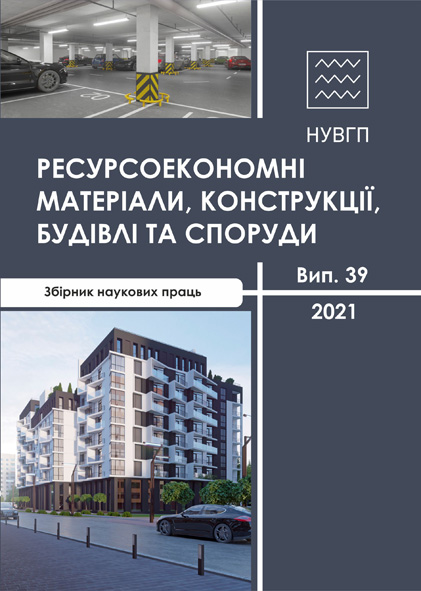IMPROVED METHOD OF DIAGRAMS CONSTRUCTION OF DEFORMATION HIGH-STRENGTH-CONCRETE FOR COMPRESSION
DOI:
https://doi.org/10.31713/budres.v0i39.010Abstract
For accurate calculation and design of concrete and reinforced concrete
structures is necessary that the characteristics of the materials from which they are made were identified as accurate as possible. According to current regulations documents, these characteristics are determined by standard methods
by testing standard concrete samples with a short time
loading in the press equipment under "soft" mode of loading,
that is, a test with a constant increase in load. As a result, deformation diagram only on the ascending branch can be obtained.
Then the resistance of the concrete is calculated for which using
the tables, the interpolation is made to determine other major
parameters. However, with modern technologies of concreting and using
various additives that change the deformation characteristics of concrete
and modulus of elasticity, with the same class of concrete, using table values is not entirely correct. You can solve this problem
in two ways. First is, to use a special press
equipment, for example, testing in "hard" mode. Second is, to use analytical methods with using complete diagrams of deformation of materials.
When constructing diagrams for special types of concrete and new concrete
generation, for example, high-grade concrete (C60 and above), fiber concrete,
fine-grained concretes and concretes using a variety of
the additive, the function must have sufficient flexibility in constructing the
deformation curve. For its more perfect construction, for these types of
concrete, the function of a polynomial of the fifth degree is best
presented in current regulations. In addition, in the current
regulatory documents lack of information of mechanical
characteristics of high-strength concrete, which requires use
of this function in order to improve building codes.
An improved method for constructing deformation diagrams of compressed concrete for high-strength concrete is proposed. To determine the maximum
relative deformations of concrete and the stress limit in concrete
proposed correlation coefficients. Determining the results
testing of prisms for axial compression by standard method parameters
fcm, Ec0, we can construct a complete diagram of the deformation state of
high-strength concrete.

